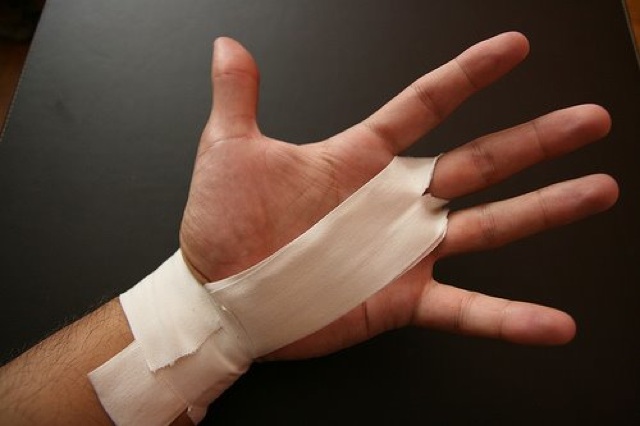
Your hands are perhaps the busiest part of your body as they are used to perform a multitude of tasks daily. From fixing the bed, preparing breakfast, typing on a keyboard, tending the garden, and the lists goes on. However, doing these chores can cause stiffness and weakness in your wrists if you are not careful.
Your wrist is a critical part of your body that can hurt when it gets so much wear and tear. Here are the most common wrist issues, which can affect your daily activities, along with the things that the medical experts can do to help.
Pain in the Joints
According to medical experts, people who broke their wrist before may develop arthritis. Arthritis is an inflammation of joints (the tissue where two bones meet).
Osteoarthritis
Osteoarthritis occurs when cartilage tissue that cushions the bones breaks down, leading the joints to augment to inflammation. The second most common location of osteoarthritis is where the thumb and wrist meet.
Its symptoms are stiffness, pain, swelling, and loss of motion or function. Hard lumps or bone spurs may also appear under the skin. While there is no cure for osteoarthritis, there are different remedies that can provide relief, such as range-of-motion (ROM) exercises, heat or ice treatments, doctor-prescribed medications, or over-the-count (OTC) pain relievers.
Rheumatoid Arthritis
In people with rheumatoid arthritis, the body’s autoimmune system attacks its joints. So instead of just affecting one joint, rheumatoid arthritis hits multiple joints simultaneously. Thus, it destroys the cartilage, tendons or ligaments weakens, and bones may become misaligned.
Its symptoms include pain, joint swelling, tenderness, stiffness, and redness. Like osteoarthritis, rheumatoid arthritis has no cure, but OTC pain relievers and injectable treatments may help.
Your Issues in the Tissues
Other forms of arthritis that cause issues to an individual’s wrist:
Gout
Here today, gone tomorrow. This is the way pain from gout works. Gout is a condition caused by a chemical imbalance in the body that results in a buildup of crystal-like deposits in tissues and joints.
Joint pains, tenderness, or redness may come suddenly and disappear within days. Although the joint in the big toe is the most common place where gout symptoms strike, they can also appear in the feet, ankles, knees, hands, and wrists.
Doctor-prescribed medications or OTC pain relievers may alleviate pain and reduce future pain occurrences.
Ganglion Cyst
A ganglion cyst is an early sign of arthritis. It is a bubble, fluid-filled lump that pops up usually on hand or wrist. Even though it is harmless, a ganglion cyst can still incur pain and interfere with daily activities. Hence, doctors may recommend wearing a splint or surgery if necessary.
Tendon Troubles
The tendons are the usual reasons for wrist pains. They can be inflamed, and the sheath surrounding them may constrict, which results in swelling and wrist pain.
Mild Tendonitis
Medical experts say that the way people sleep can cause damage to tendons. How? Individuals tend to extend or flex the wrist when they are sleeping. In several cases, people come in complaining of pain, only to find out that they have mild tendonitis on the wrist. Prescribing an immobilizer or a brace to use at bedtime will generally help prevent pain, as well as twisting or breaking the wrists while sleeping.
De Quervain’s Tendonitis
Repetitive movements can also cause tendon inflammation. In De Quervain’s tendonitis, these movements irritate the tendons found at the thumb’s base, causing pain between the thumb and the wrist. The section over the thumb may swell and increases the pain when the hand is used for tasks like unscrewing lids.
The initial step in recovery is to stop doing the activity repetitively, which caused the inflamed tendons in the first place. Prescribed medications, OTC pain relievers, thumb splints, and injection may alleviate pain and swelling, but in extreme conditions, getting Seattle Hand Surgery might be necessary.
On Your Nerves
Your wrist can hurt if something is getting on your nerves.
Carpal Tunnel Syndrome
You may develop carpal tunnel syndrome once the tunnel that surrounds the nerve between the wrist and thumb experiences pressure. The nerve controls the sensation in hand, so when pressure is placed on it, the palm and fingers could experience a tingling or burning feeling.
Doctors recommend resting the hands, using a splint, applying ice, and doing physical therapy. In some cases, surgery is advised to lessen the pressure on the nerve.
Wartenberg’s Syndrome
Wartenberg’s syndrome, also known as wristwatch neuropathy, is the entrapment of neuropathy at the superficial branch of the radial nerve (SRN). Due to the compression of watch parts, bracelets, and bands, symptoms of numbness, tingling, or burning occur at the wrist. Experts recommend conservative therapy for 2 months, but some cases may require urgent surgery.
Down to Your Bones
Medical experts say that the wrist is likely the second most common place for injury after the hip when people fall. Once an individual falls and bends, or twists the wrist at a different angle, they could sprain it. The person may experience swelling, bruising, discoloration, and tenderness, and a splint may be needed. However, surgery may be advisable in extreme cases, like when the bone may have torn along with ligaments.
Conclusion
There are several reasons and conditions why a person’s wrist may hurt. To avoid this condition, try to prevent wrist problems by ceasing any activities that cause pain, take pain medications, and make sure to get enough nutrition and therapy.

















Follow Us